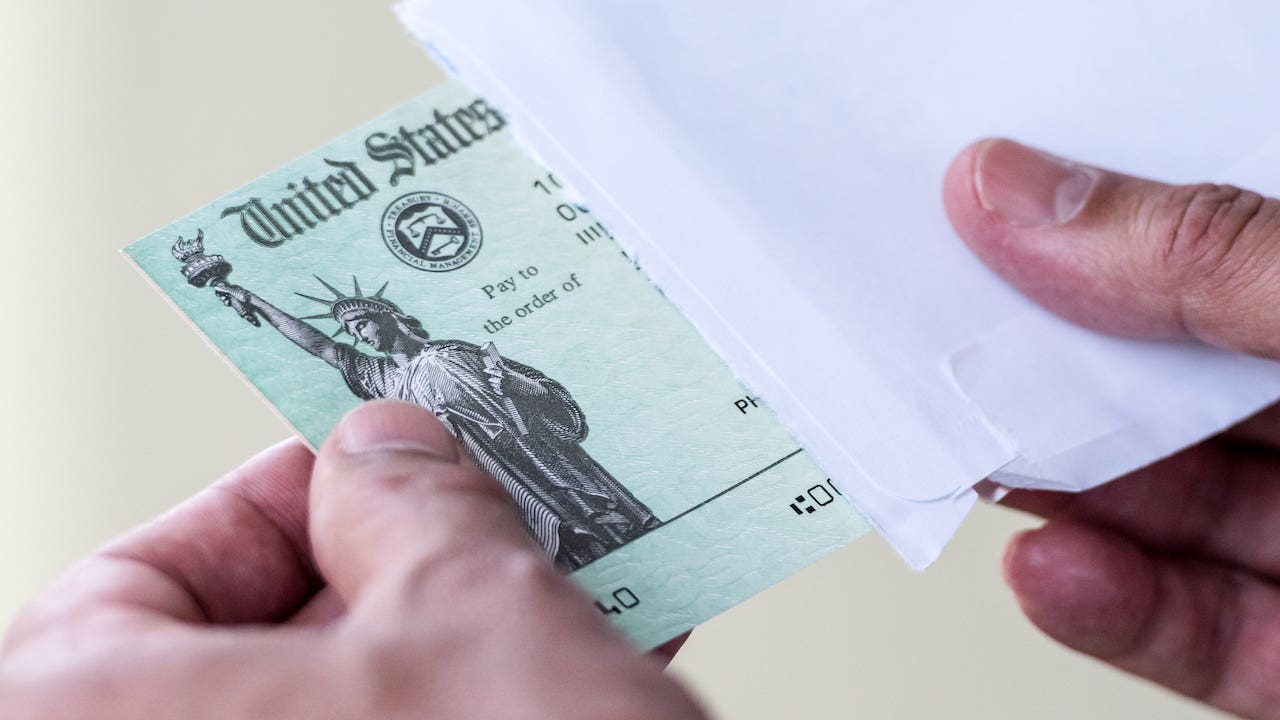Your $1,200 stimulus check: How to claim it before it’s too late

The Bankrate promise
At Bankrate we strive to help you make smarter financial decisions. While we adhere to strict , this post may contain references to products from our partners. Here's an explanation for .
There’s a good chance that if you didn’t already receive a stimulus check via the CARES Act relief package, you still may be eligible for one. In fact, the IRS says there are about 9 million Americans who have yet to claim their $1,200 check and they’ve recently extended the deadline to claim missing checks until November 21.
With all of the uncertainty around the second round of stimulus, you’re going to want to be sure to file a claim for the first round before it’s too late. The good news is that the process for claiming a missing check is surprisingly easy. However, the tough part has been spreading the word to those who may be eligible and don’t realize it.
In an effort to spread awareness, the IRS said that it will be sending out letters to those who may be eligible and is encouraging them to register online and check their payment status. But even if you don’t receive a letter and haven’t gotten a check, it’s still worth checking to see if you’re eligible for one.
Here’s who may be eligible and how you can request your stimulus funds before the deadline passes.
Who’s eligible for a stimulus check?
Those who filed a 2019 tax return aren’t the only ones eligible for a stimulus check. Non-filers can also qualify for one.
Here’s a look at what’s required in order to qualify for a check:
- Not dependent on another taxpayer
- A work eligible Social Security number with an adjusted gross income of:
- $150,000 for married couples filing jointly
- $112,500 for head of household filers
- $75,000 for all other eligible individuals
- Eligible retirees and recipients of Social Security retirement, survivor or disability benefits (SSDI), Railroad Retirement benefits, Supplemental Security Income (SSI) and VA Compensation and Pension (C&P) who do not file a tax return
- Eligible taxpayers who filed tax returns for 2019 or 2018
- Those with little to no income who didn’t file a tax return or receive any federal benefits listed above
If you fit one of these descriptions, then you will want to make sure you register with the IRS before November 21 at 3 p.m. EST so that you can claim your check.
How to claim your missing stimulus check
Claiming a missing stimulus check is actually pretty simple. The process, however, varies between those who filed taxes and those who did not. Nonetheless, both will have to head to the IRS website to check on their status.
Tax filers
If you filed a 2019 tax return and are eligible for a stimulus check but have yet to receive one, then you will want to follow up to see what happened.
Here’s how to check on your status:
- Go to IRS.gov
- Select the “Get My Economic Impact Payment” button
- Select “Get My Payment”
- Enter your Social Security number, date of birth, street address and zip code
From there, the IRS will let you know the status of your payment and whether or not more information — like your bank account number — is needed.
If you get a “Payment Status Not Available” message, that means your 2019 tax return has not been processed yet or the IRS is still determining your eligibility.
Non-tax filers
If you did not and do not plan to file a 2019 tax return, but qualify for a stimulus check, then you will need to use the IRS “Enter Payment Info Here” tool.
Non-filers will need to provide the following information to prove eligibility:
- Full name, current mailing address and email address
- Date of birth and Social Security number
- Bank account number, type and routing number (if you don’t have one then you can elect to receive a check in the mail)
- Identity Protection Personal Identification Number (IP PIN) if you received one from the IRS (use “Get an IP Pin” tool if you lost it)
- Driver’s license or state issued ID
For each qualifying child during 2019, you will have to provide their name, Social Security number or Adoption Taxpayer Identification Number and their relationship to you or your spouse.
Once completed, you will receive an email from customer service at Free File Fillable Forms, a trusted IRS partner, that acknowledges whether you have successfully submitted your information or if there’s a problem.
After this, the IRS website states that non-filers can start tracking the status of their payment using the “Get My Payment” tool two weeks after registering.
Learn more:
- How much money could you get on the next stimulus check?
- Skinny bill or a second $1,200 stimulus check? Here’s the latest on who could be eligible
- 13 steps to take if you’ve lost your job due to the coronavirus crisis
Related Articles

Still missing your coronavirus stimulus check? Here’s what you should do


College students may be able to collect up to $1,800 in stimulus payments, here’s how
